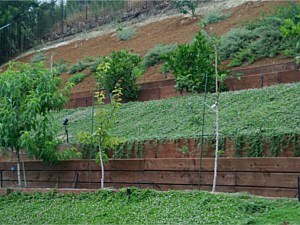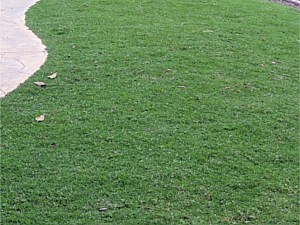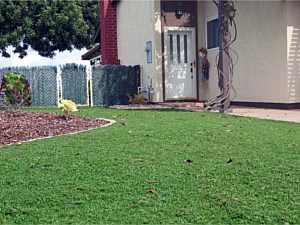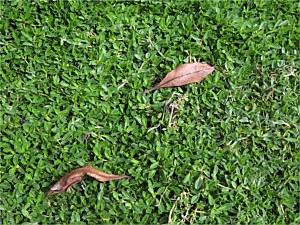Kurapia Groundcover – A Lawn Substitute

Characteristics
Kurapia is a low-growing, dark green perennial groundcover belonging to the Verbena family, not to be confused with the invasive species, native to California species, Phyla nodiflora. Kurapia is sterile and non-invasive, and it is a perfect lawn replacement, or for hillside stabilization.
Kurapia’s dense canopy and deep root system make it drought tolerant and able to thrive in a wide range of soil types and soil conditions, including salinity. It tolerates full sun, partial shade, and light foot traffic. It is not a ground cover for kids to play on.
Kurapia will reach 3 to 4 inches tall and produces white flowers from spring to summer, mostly when exposed to full sun. Mowing is not required, but we recommend cutting every 4 to 6 weeks to keep it under control. Additionally, a weed eater works well, and is preferred by our maintenance foreman.
Installation
Kurapia comes in flats containing 72 plugs per tray. Although it can be planted closer than 18 inches on the center, it’s not necessary in most cases. It will take 444 plugs per 1000 square feet at 18 inches on the center.
Kurapia can be installed year-round, especially in San Diego. The fastest establishment period is from March to September. But note that excessive cold to hot temperatures will slow down the fill-in time. Kurapia takes 3 to 4 months to establish itself.
Kurapia prefers sandy to sandy loam soils. Clay soils should be amended with a proper compost at the rate of 2 to 3 yards per 1000 sq. ft. to ensure adequate drainage. Prior to planting, weeds should be sprayed with repeated applications of a non-selective herbicide and removed.
Irrigation
Kurapia is drought tolerant and will thrive in low-water conditions, but not for the first 2 to 4 weeks, a period which needs to be extended during excessive heat conditions. After the initial establishment period, soak the planting area twice a week. Additional irrigation may be required for sandy soils and areas with full sun exposure.
Fertilization
Start fertilizing as soon as new growth appears with a standard fertilizer such as Gro-Power every two weeks until full coverage is complete. From then on, apply fertilizer once annually in the spring.
Pest Control
Kurapia has no known diseases, insects, or pests, especially in the dry climate of Southern California.




